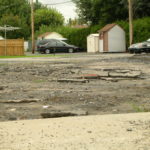 In our May 20 Blog Post we challenged the uncritical acceptance of the notion that “If you can’t measure, you can’t manage” But measures can be deceptive, when they are chosen without understanding as we saw in the May 24 Blog Post. With Government and Senior Management focussed on the notion of managing by measurement, more measurements are being demanded all the time – in all areas, not just infrastructure. In order to survive, operatives seek to comply by measuring what is easiest, rather than, measuring what is important.
In our May 20 Blog Post we challenged the uncritical acceptance of the notion that “If you can’t measure, you can’t manage” But measures can be deceptive, when they are chosen without understanding as we saw in the May 24 Blog Post. With Government and Senior Management focussed on the notion of managing by measurement, more measurements are being demanded all the time – in all areas, not just infrastructure. In order to survive, operatives seek to comply by measuring what is easiest, rather than, measuring what is important.
Some things are easier to measure than others – quantity, for example, is easier to measure than quality. Inputs are easier to measure than outputs. Outputs are easier to measure than outcomes. Products are easier to measure than services.
The aim of all management is to secure desirable outcomes but it is easy to get diverted into measuring what it is easy to measure rather than what it is important to measure,
For example, many councils have hours of videos of storm water infrastructure – unanalysed! Lots of measures – but no management- worthy information.
The condition of road seal is easier to measure than the condition of the underlying road pavement, the first is visible whereas the latter is not. Some years ago a state transport authority adopted a policy that they called ‘a stitch in time’, quite a catchy title for maintenance. Under this policy they required agencies to reseal every ten years and to reconstruct the road pavement every 100 years. Easy to measure!
But it resulted in reseals being carried out over decidedly unsound road pavements because the time for road pavements was not up. It will not come as a surprise that the reseals did not last, much money was wasted and the overall condition of roads deteriorated until the policy was changed.
Question: Is there an answer to this problem? What is your experience?

In my experience and research, the information needed to improve and maintain infrastructure is held within most asset-based organisations. It is in the collected data, and in the minds of the people performing the maintenance. What is lacking is the institutional understanding of the the problems and how to best deal with them. A disconnect between decision making and what is measured, between data and knowledge. For many organisations the employing of additional people to help with understanding is difficult, while the spending of millions of dollars on maintenance is easily justified. This is the false economy of controlling expenditure by minimising head-count, another easy measure. These problems do eventually resolve themselves, as similar organisations slowly improve their practice and decision making techniques the easy measure that is always in use “what do they do that we do not” causes improvement. The disappointing aspect is the time it takes for improvement to propagate this way.
Would improvement be speeded up if we were to develop the field of infrastructure analysts? It is easy to write a brief to video stormwater channels, but much harder to specify what analysis is required of the finished videos for the purpose of asset management improvement. So is there not an opening for the design of analysis briefs? Perhaps funded and provided by the key asset management associations? Just a thought!
It is an excellent idea. The field is full of data waiting for interpretation. It may even be a significant source of doctoral research.